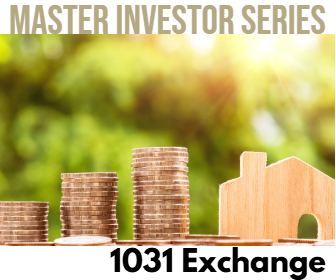
When it comes to building long-term wealth in real estate, the 1031 Exchange is one of the most powerful tools available to investors. Yet, so many hesitate to use it—either because they don’t understand it fully or they’re afraid to let go of “comfortable” assets.
Let’s change that.
What is a 1031 Exchange?
A 1031 Exchange, named after Section 1031 of the IRS tax code, allows investors to sell a property and reinvest the proceeds into another like-kind property—without immediately paying capital gains taxes. This deferral strategy allows your money to work harder and grow faster by keeping your gains invested.
For example:
Let’s say you bought a rental property for $300,000 and sell it a few years later for $500,000. Normally, you'd owe taxes on that $200,000 profit. But with a 1031 Exchange, you can roll that entire $200,000 into your next investment—potentially buying a bigger or better-performing property—without paying taxes right now.
Why Investors Should Pay Attention
Here’s what makes 1031 Exchanges so powerful:
-
Defer Capital Gains Taxes: More money stays in your pocket for reinvestment.
-
Leverage Up: Use your deferred tax savings to upgrade to more valuable or better-performing properties.
-
Diversify or Consolidate: Trade several properties for one, or one for several, depending on your portfolio goals.
-
Improve Cash Flow: Move from underperforming assets to ones with higher income potential.
When Does It Make Sense?
Many investors stick with "safe" properties they’ve had for years—but often those properties aren’t maximizing their income or equity potential. If:
-
Your current rental has plateaued in value
-
You’re spending too much time or money on management
-
You want to invest in a more landlord-friendly market or property type
…it might be time to explore a 1031 Exchange.
I recently consulted with a client who was ready to part ways with an older rental property that had become more of a burden than a benefit. Between constant maintenance calls and rising expenses, the return just wasn’t worth the stress. We decided to leverage a 1031 Exchange to reposition their equity into a newer, low-maintenance duplex located in a growing South Florida neighborhood. The result? Projected monthly cash flow will more than double—with far fewer headaches and significantly less hands-on management. It's a strategic upgrade that aligns with their long-term wealth goals and gives them breathing room now.
A Few Ground Rules
To qualify for a 1031 Exchange:
-
The properties must be held for investment or business use (no flipping or personal residences).
-
You have 45 days from the sale to identify potential replacement properties.
-
You must close on the new property within 180 days of selling the original one.
-
The replacement property must be of equal or greater value.
Let’s Talk Strategy
Now that you know what a 1031 Exchange is, let’s talk about how to actually use it in the real world.
A 1031 Exchange isn’t just about deferring taxes—it’s about leveling up your portfolio. Whether your goal is to increase cash flow, reduce maintenance headaches, or consolidate into easier-to-manage assets, this strategy can help you get there faster.
Here are a few smart ways investors are using 1031 Exchanges right now:
-
Swapping outdated single-family rentals for newer duplexes or small multifamily properties in high-growth areas.
-
Trading into different markets to take advantage of better landlord laws or higher rents.
-
Consolidating multiple low-performing properties into one strong income producer with less hassle.
-
Moving out of intensive management (like Airbnb or Section 8 units) and into stable, long-term rentals.
The key is identifying where your current investments might be underperforming—and having a game plan to upgrade, simplify, or diversify with your replacement property.
Not sure where to start? That’s where I come in. I help investors like you evaluate their current holdings, uncover hidden equity, and match it to the right replacement properties that align with your financial goals.




